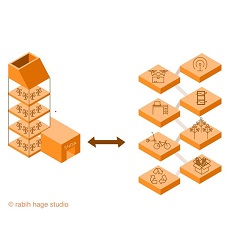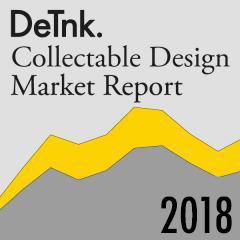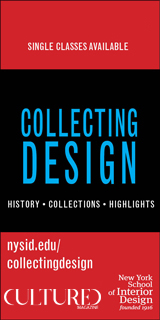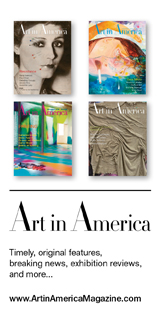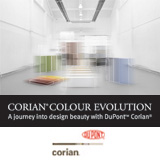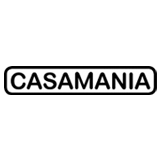The Vulnerabilities of Our Cities and How to Build a Resilient Architecture - Lessons from 2020
by Rabih Hage
2020 has unveiled the vulnerability of our social interactions in cities. Daily mass travel to work and the 20th century theory of shared open work spaces, initiated by pioneers in the field like Frank Lloyd Wright, Ludwig Mies van der Rohe and other luminary architects, with social equality and a sense of dilution of hierarchy in the work space, amongst other particularities of our modern living habits have been revealed as weaknesses by the current crisis.
The push towards cities and industrial urbanisation through the rural exodus of the 19th century has created beacons of economic production in factories and urban businesses. We are living in extraordinary times, not only because of the deadly nature of this year’s pandemic itself, but also of the light that it has shone on the economic and social weaknesses of our current built habitat.
We are social mammals organised around our potential food source, an idea that has been forgotten since we left our troglodyte habitat. Humans started building intelligent self-standing structures as their new shelters which transformed little by little into social symbols and sometimes totems of power, ever living in a concentric form, forgetting the topography of the natural terrain for a social topography. Now it is all down the gutter.
We are indeed made to be living together. Democracy of the habitat has been tried many times especially in social housing or when there was greater demand for housing; after wars or natural disasters. In fact we have always been building in emergency (and imperfectly) even when we had plenty of time to analyse, rethink and re-plan our clusters of habitats, buildings and cities during a century of staggering progress which was the 20th.
It was thought that innovation is symbolised through verticality, duplication, and standardisation of the "shining cities" of the built environment, with parks and communal spaces surrounding high density blocs of flats and offices.
I have always thought building anew is somewhat ineffective and undermines the environment and human logic. We have built enough over the centuries, when rather it is repurposing that is the solution. Then, comes a pandemic which sparks a new medical and political policy towards social interaction, a policy which heavily emphasises the practice of social distancing, even for a relatively short period of time, which will put a scar on our collective memory, especially in the urban context.
It used to be walls or forbidden valleys in ancient times. Now for the sake of public health, quasi martial laws are applied in the face of this new and unpredictable virus. However, a pandemic of this magnitude was predictable, indeed many public health experts did predict such a threat. Every decade or so we have a reminder of the fragility of the urban structure through a new viral disease, Sars, Mers, Ebola, bird flu, swine flu, etc.
We have built extremely densely packed modern cities and these have led to a way of life that is unnatural for us humans. The big question now is whether the amount of social interaction we have been used to is really necessary and indeed safe; for example the busy commutes for a staggering amount of hours and miles from home each day, the frequent outings to the café, restaurant, and pub and the bustle on the high streets and shopping malls and mass consumption.
I believe that it is time for a rethink. In every difficult situation, humans naturally strive for a solution in order to survive. The concentric city built around a castle and centre of culture and commerce, is done. The gridded city with axes of wealth is also done. The garden city has always been a utopia providing a beautiful dream, though it is difficult to duplicate in many settings.
Internet technology has been vilified because of its early years without proper privacy control and easy intrusion into our homes and lives. I think it is an avenue for freedom of speech and ideas, spreading positivity and building on its advantageous connectivity. It is just at its beginnings and we are still discovering ways to harness its potential. Protecting each other from misuse, the success of this new media and tool will surely come from inducing into it our pre-existing ethical and civic values.
The new spectrum of communication technologies we have developed since the mid-20th century is our new revolution and the engine for change to our habitats.
Working from home, automation, robotics, and the reductions of manual labour should be welcomed as liberators of humans from the artificial mass nomadism of extensive daily travel to earn a living. What living? Living means is a healthy, balanced, satisfied society. Modern electronic communication will sustain the links for economic prosperity, amend and abolish mass movement of people for good, so we can finally concentrate on reorganising our social fabric and its diversity of urban and rural settings.
This can be done by creating habitat clusters based on the human scale and distances (not distancing) and true social values like; compassion, altruism, exchange of knowledge and resources through open source sharing and generosity of knowledge. All of the above is deliverable through a new design and architecture. New Design will build resilience around us, our lives, and our communities for many future generations.
This pandemic is making us stop and rethink the way we live and work, travel and settle, the safety of our homes and the resilience of our society.
It is time for introspection; thinking of our loved ones, our homes, and our long term wellbeing and resilience. It is time to reflect and plan: where and how will we live tomorrow? Whatever the social background, scale, means and location, there is an answer and it is not one recipe. It comes in many forms and specific formulas depending on the topography, geography and the family structure. Yet the challenge is not the pandemic but space. Space and demography are incompatible, an old long lasting battle which we should not fight with high-rise or copy/paste buildings. A case by case approach is necessary, using; personality, individuality and beauty, just like us as we aspire to be, this resilient society in a new architecture.
Our New Architecture should abide by the following essential social and design rules:
Social:
- Travel should not be a necessity whenever possible, but a pleasure, a luxury,
- Ownership is not a must but a privilege; a personal choice or an accident (if by inheritance),
- A car is not the only modern means of transport. Other means of local and intercity transport should be available,
- Working from home is not only a lifestyle but a way of increasing productivity,
- Long term personal storage should be reduced or abolished as accumulation should be avoided,
- We should redefine distances between neighbouring buildings/dwellings (socially and architecturally) to create more, light, ventilation and a flexible social interaction,
- The rehabilitation of the main street and the market place organised per cluster of habitats to a relative scale,
- Commercial rent management or cooperation between landlords and tenants, in a form of partnership based on turnover should be a systematic pact,
- Providing high speed internet and drone delivery facilities should replace the big budgeted new public transport projects (upgrading public transport can still happen yet without additional use of land),
- The reuse of existing buildings should be prioritised and new construction minimised,
- The creation of self-sufficient (autarkic) neighbourhoods, with inter-connection between them for commercial and creative exchange as a way of decentralising the city). In a way ‘cellular-ising ‘neighbourhoods is much better than creating a megapolis and expanding the city as we do today. The exchange between local autarkies will create better local expansion, appreciations, exchange and resilience with an easier access to social services.
The control, management and implementation of all the above can be done through local and national tax incentivised policies.
Design:
- Natural ventilation of the house using less machinery,
- Energy efficiency and a connection to the elements and location by working with orientation, topography, wind, shade and the seasons,
- Working with nature, harnessing energy and managing waste,
- Creating more pedestrianized cities and self-sufficient neighbourhoods with most services and commerce accessible by foot to deliver a human scale city-village and connected independent neighbourhoods,
- Respect and encourage individual and diverse living rhythms in a neighbourhood/city,
- Create autonomy and independence of local supplies of energy and services, production of goods, manufacturing and agriculture,
- Decentralise energy production and distribution for more independence and resilience,
- A home office/workshop should systematically be included in the habitat,
- Access to external personal space should be compulsory,
- New mobility storage should slowly replace the garage or car park,
- Creating a small naturally ventilated and cooled storage mainly for food and essentials,
- Repurposing and renovation should be encouraged and prioritised.
- Implementing changes to our existing cities’ morphology and habits should be encouraged by:
o Lowering the density of existing cities, creating wider pavement and transforming more streets into pedestrian only spaces,
o More sanitisation; like public hand washing facilities (touch-less) and bio-sensors in sewers to detect and map contamination outbreaks in cities,
o Creating more parks and green spaces,
o Establishing new planning laws to reduce office blocks and apartment blocks density by half of the current ratios, and communal spaces should be redesigned for better circulation and ventilation with permanent air renewal systems in corridors/hallways.
o Refitting or creating in all offices and dwellings better ventilation and extraction systems ideally using less mechanisation and more natural processes.
This is the start of a new way of living, a quiet revolution, a quiet architecture, with the reversal of the rural exodus started two centuries ago. This is a new dawn in architecture, the garden not the city, the country and the proximity to one another, not crowding public spaces and transport with anonymity. The local will be immensely respected by the global.
Rabih Hage
Architect
Founder of Rabih Hage Studio

A New Architecture






